Swiss Birdradar Solution just released a new software version for the BirdScan MR1 and MV1.
Among many other improvements the new release includes:
- New bat classifier
- Improved general classifier can now even better distinguish between birds and large insects.
(due to the abundance of the latter under certain conditions this is of paramount importance) - Standard classifier includes now following groups: passerine type, wader type, swift type, large bird, bird (when no further classification is possible), bird flock, bat, insect, nonbio, precipitation
- An improved wing beat frequency estimator
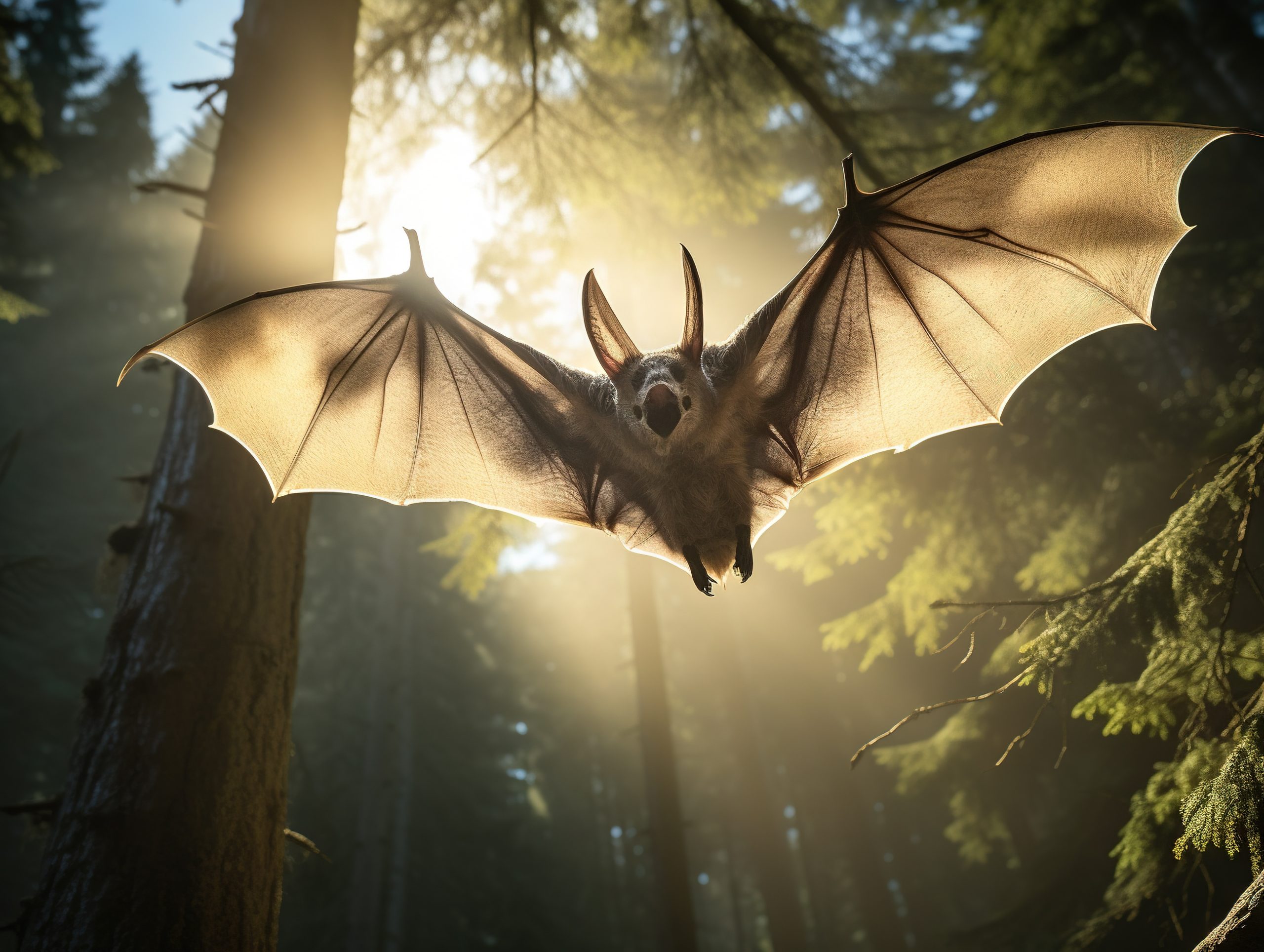
Grey Long-Eared Bat
Bat Classifier
After many years of development and collecting reference data, a breakthrough in bat classification could finally be reached. The new AI classifier is now able to discern between birds and bats based on the different biomechanics and backscattering types of wing beat activity. Below follow a few examples of typical signatures of the different classes (the signature is the backscattered power received over time for each individual object).
Bat Signature
A lot of bat signatures have a more rectangular waveform:

Passerine Type Signature
The bat signature can be clearly distinguished from typical flap-bounding activities of most passerine type birds.

Wader Type Signature
Bat signatures can be distinguished to a certain extent from the continuous wing flapping pattern of typical wader type birds based on different back-scattering behaviour of a typical wing beat cycle.

Swift Type Signature
Swifts can be distinguished from bats based on the flap-gliding wing beating pattern and the different backscattering of a typical wing beat cycle.

Insect Signature
Bats can be clearly distinguished from insects based on size, shape features and wing flapping pattern. In the insect signature below the 1.6 Hz modulation is due to the elongation of the insect and the linearly polarized rotating antenna (0.8 rotations per second). Additionally, a small modulation of 48 Hz due to the wing beating is detectable.

Validation of Bat Classifier
Validation of the new bat classifier has been evaluated for the locations Switzerland, Texas and Israel so far. The results look auspicious and generally agree with the expected phenomenology (nocturnal, no activity during the winter months in northern Europe). This is especially promising as the locations are quite different and cover a broad range of the aerial fauna. The examples below show the activity for three tested locations (nigh-time with gray background, time-zone is UTC).
For the specific location in Switzerland only little bat activity is expected during summer:
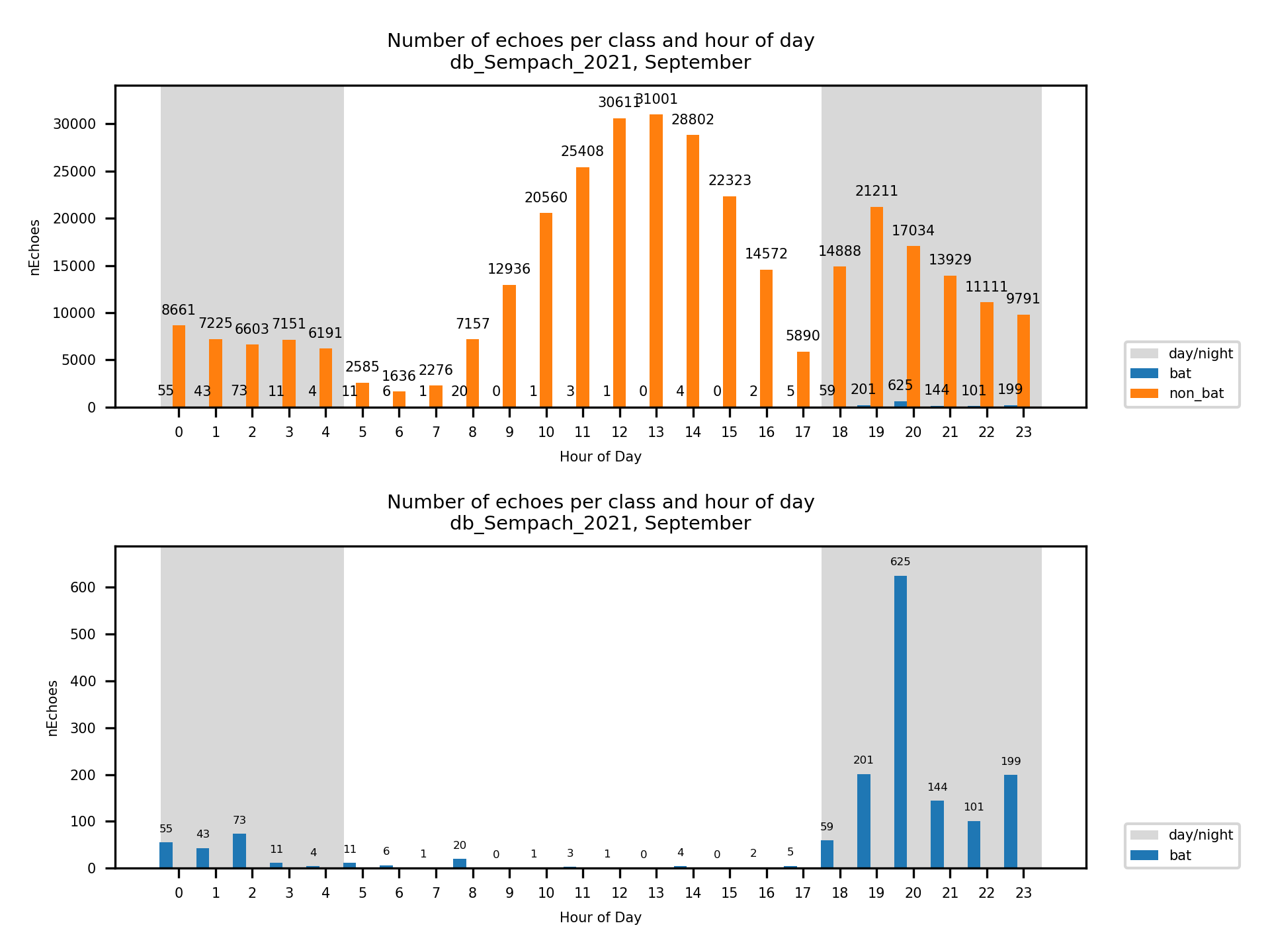
For the Texas location near the Bracken Caves a lot of bat activity is expected:
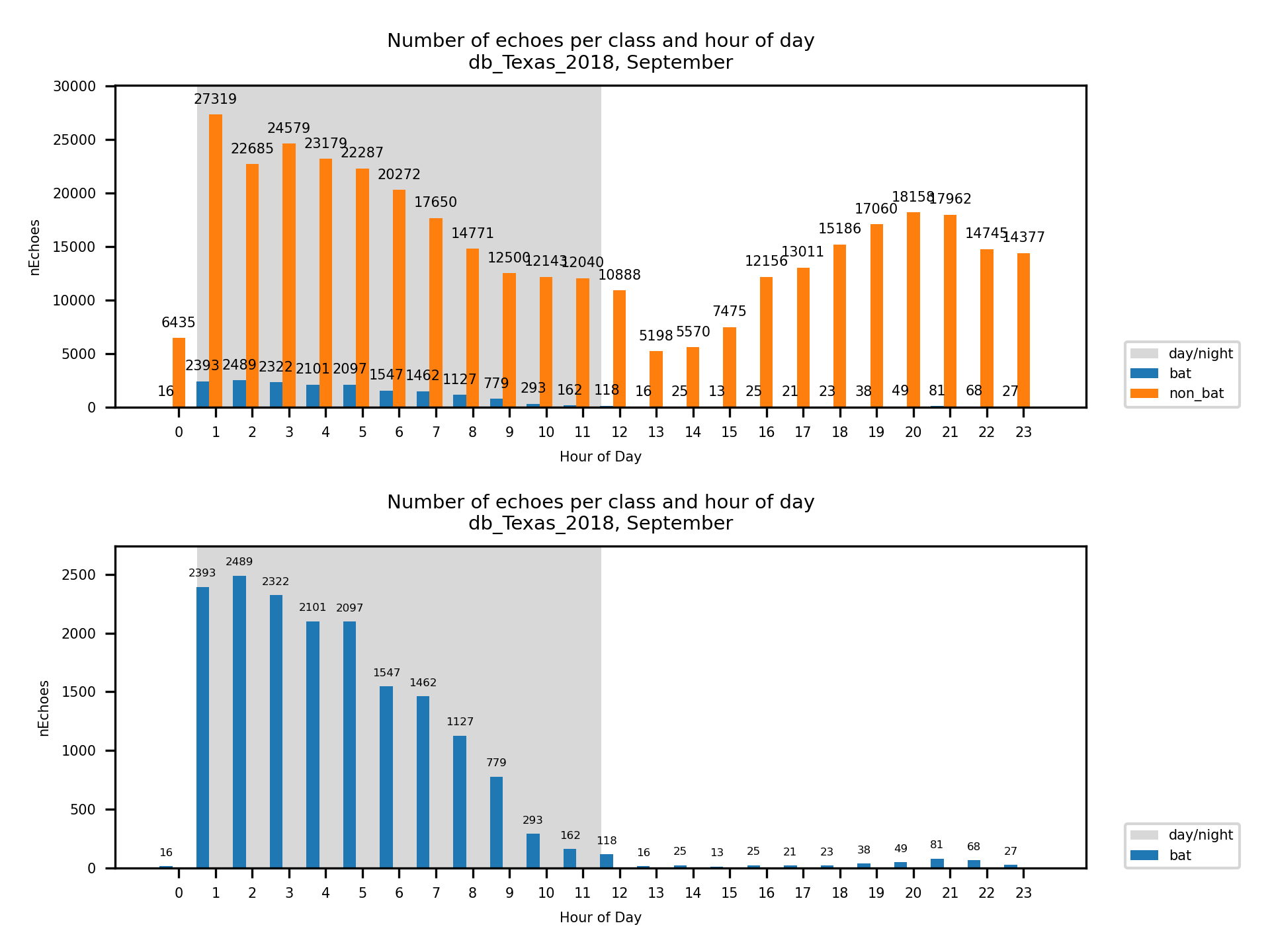
For the location in Israel the challenge for correct bat classification is bigger as a lot of different species are expected:
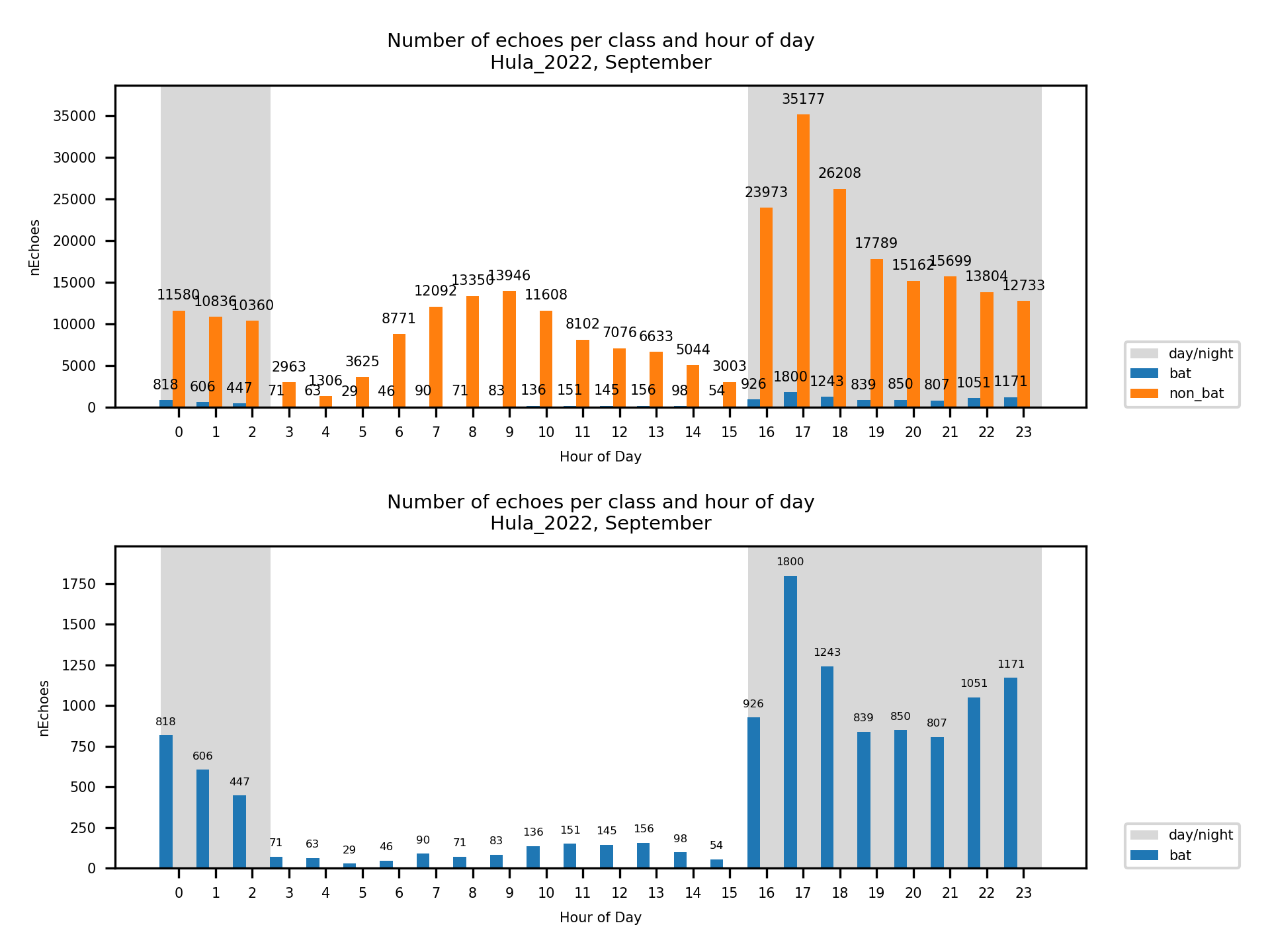
Wing Beat Frequencies and Classifications
The scatter plot below illustrates the possibilities and performance of the new classifier: The Y axis contains the wing beat frequency of the detected objects and the X axis is the date/time. Each individual dot/marker belongs to one object that crossed the radar.
- There are different passerine species/groups (blue) flying over the radar. During the night there are two groups, one with about 11 Hz and another one with about 14 beats per second. There is a third passerine type during the morning with a wing-beating-frequency of about 20 Hz.
- During the early night from 4th to 5th October there is a lot of bat activity (magenta).
- Especially during dusk there is a lot of insect activity with clear wing beating frequencies (yellow/orange)
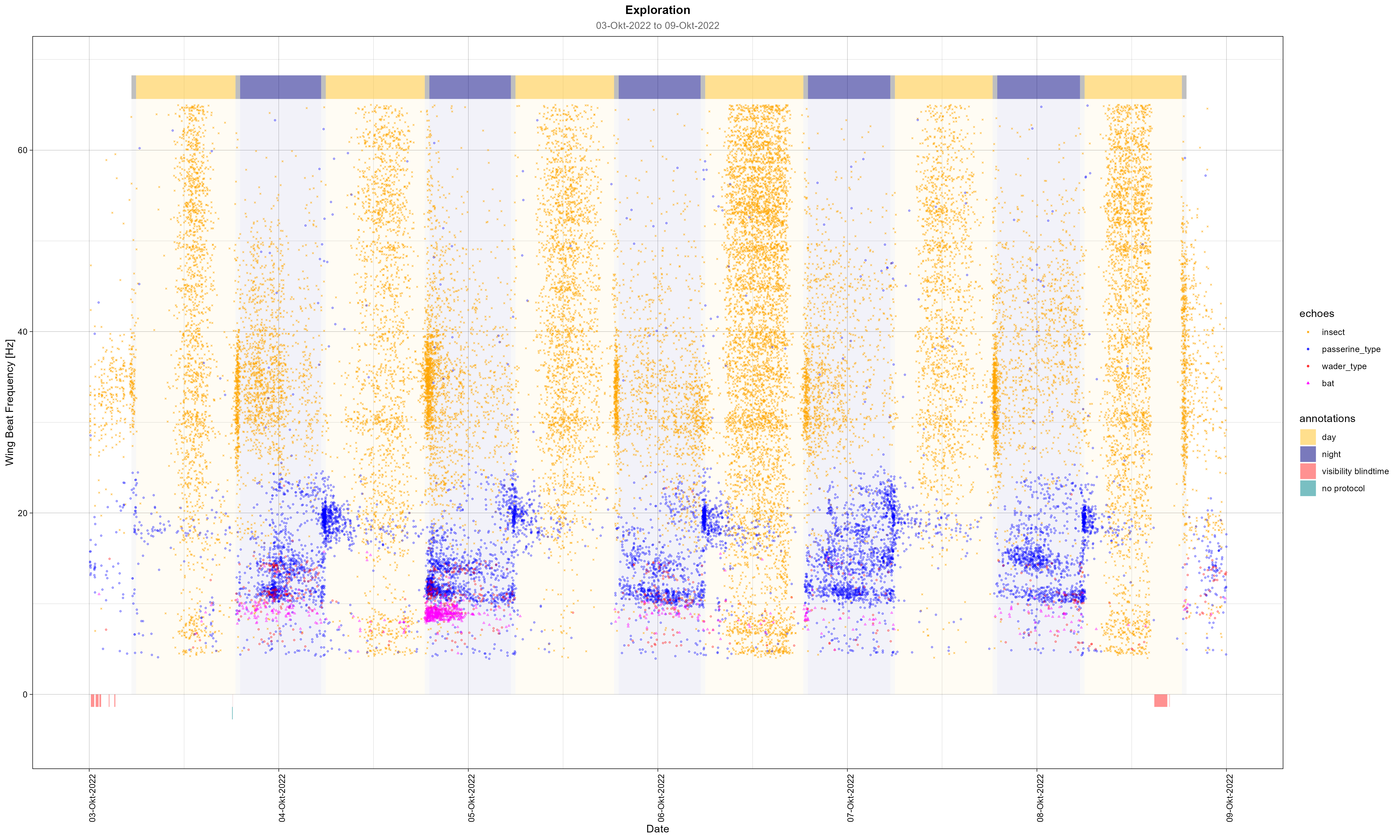
More Signature Samples
Bats
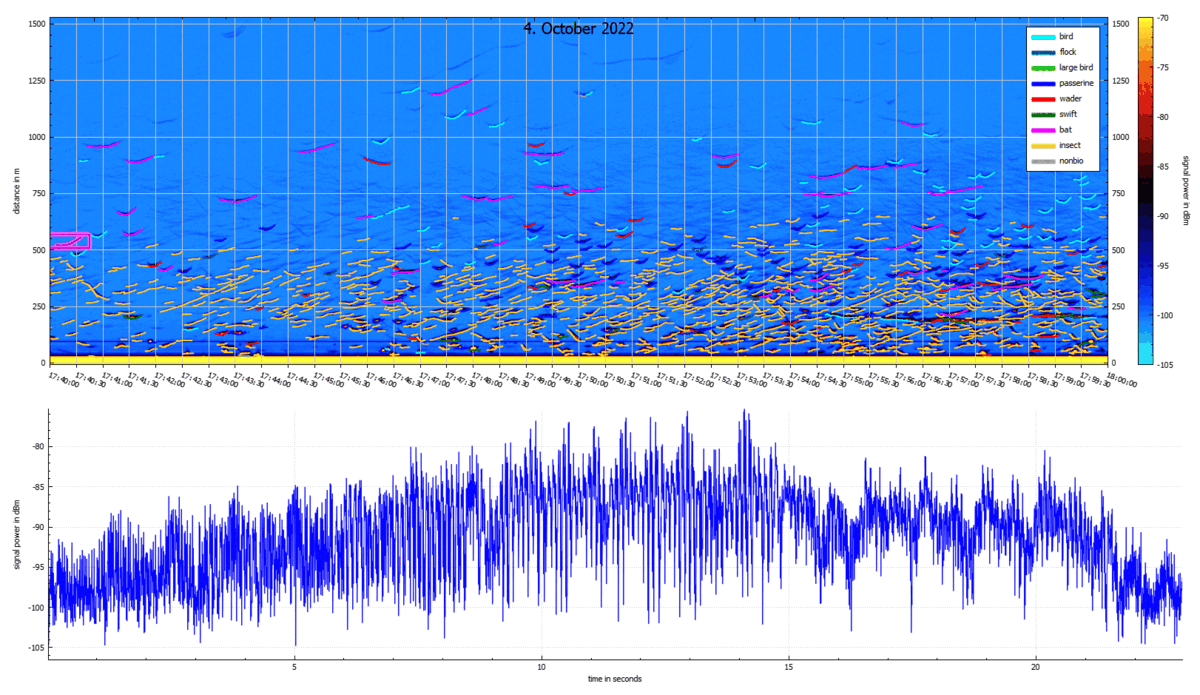
Passerines
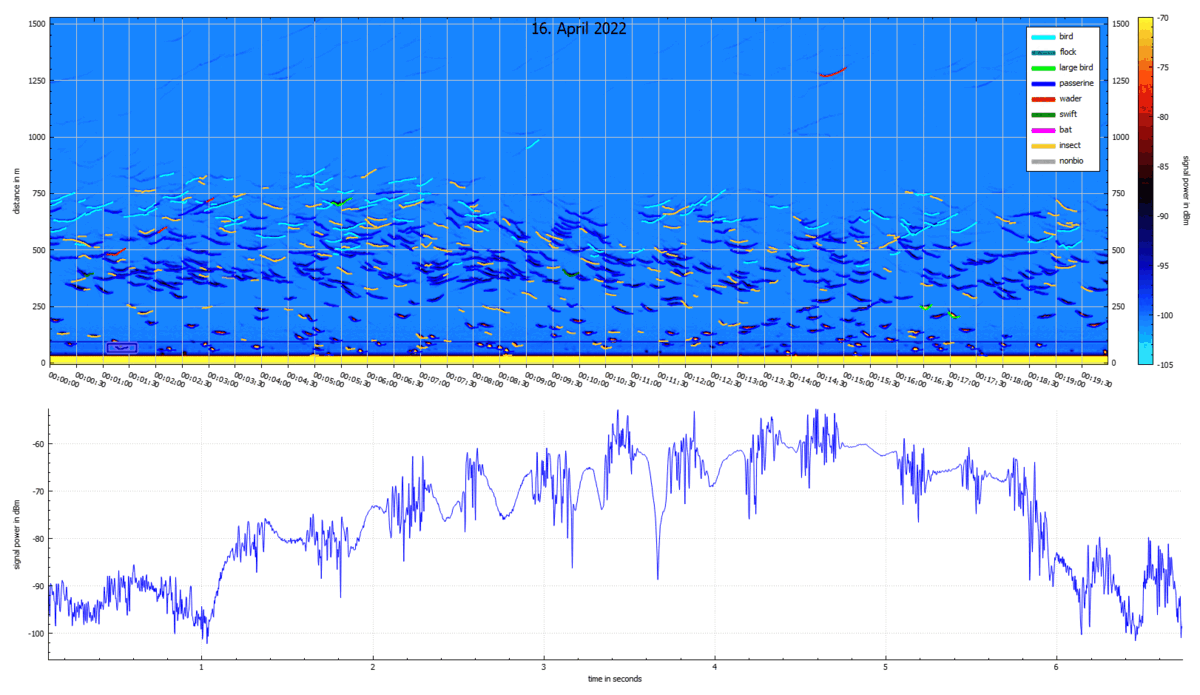
Waders
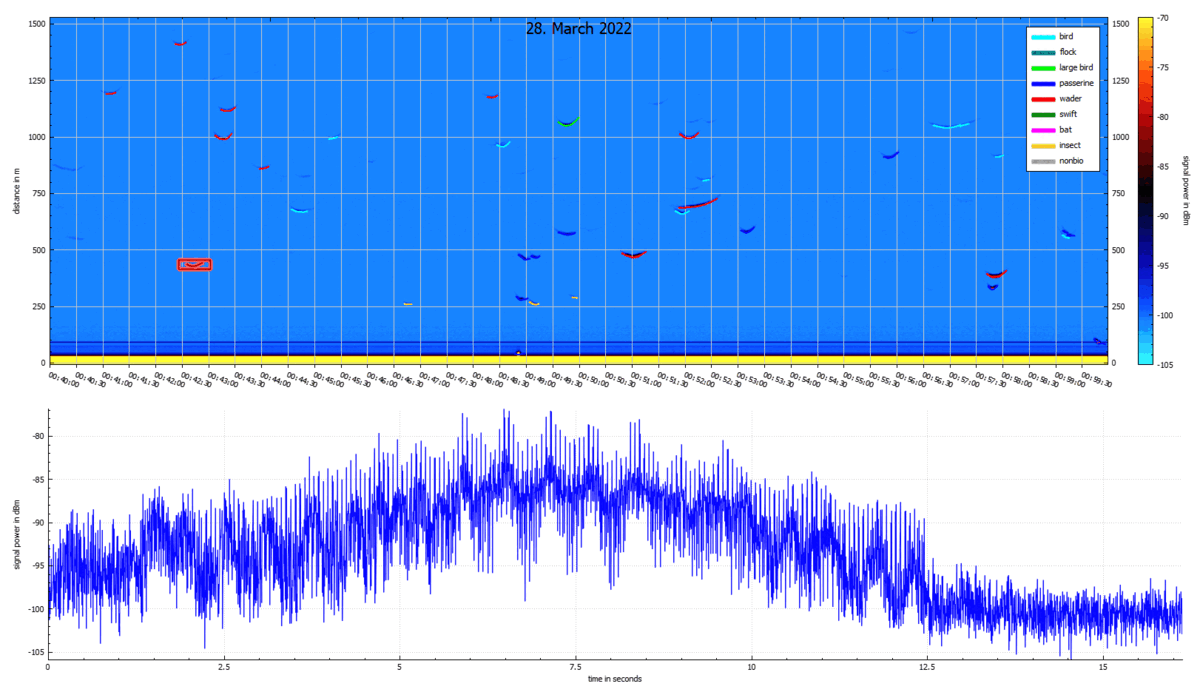
Swifts
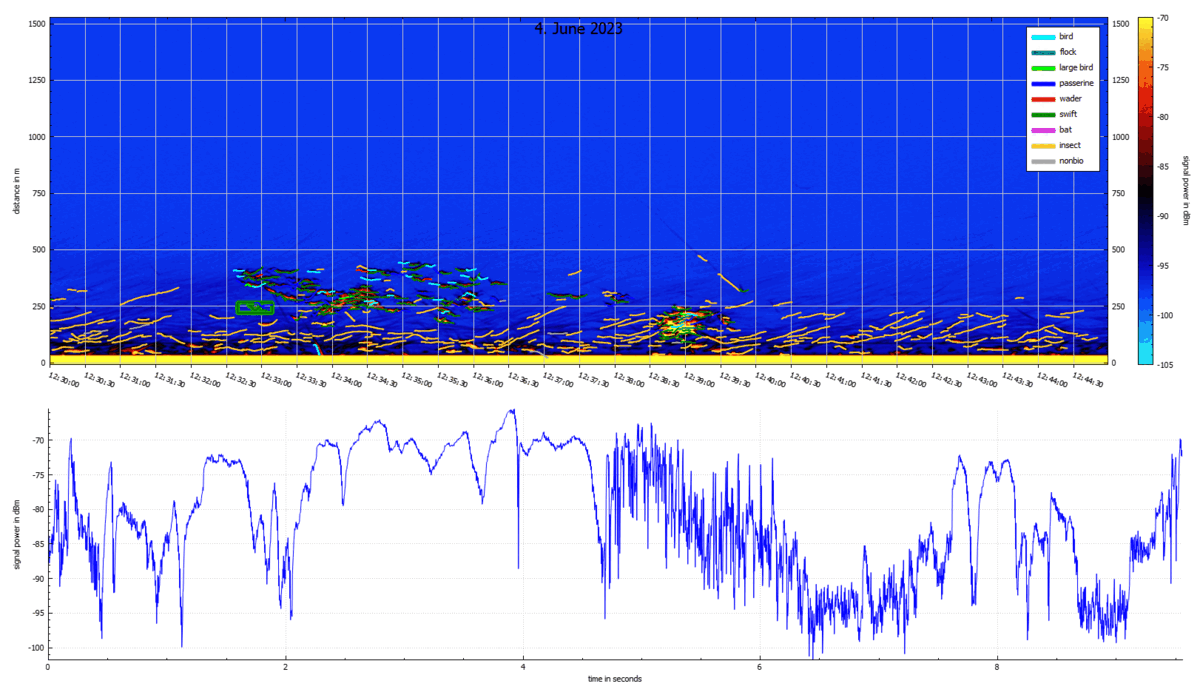
Insects
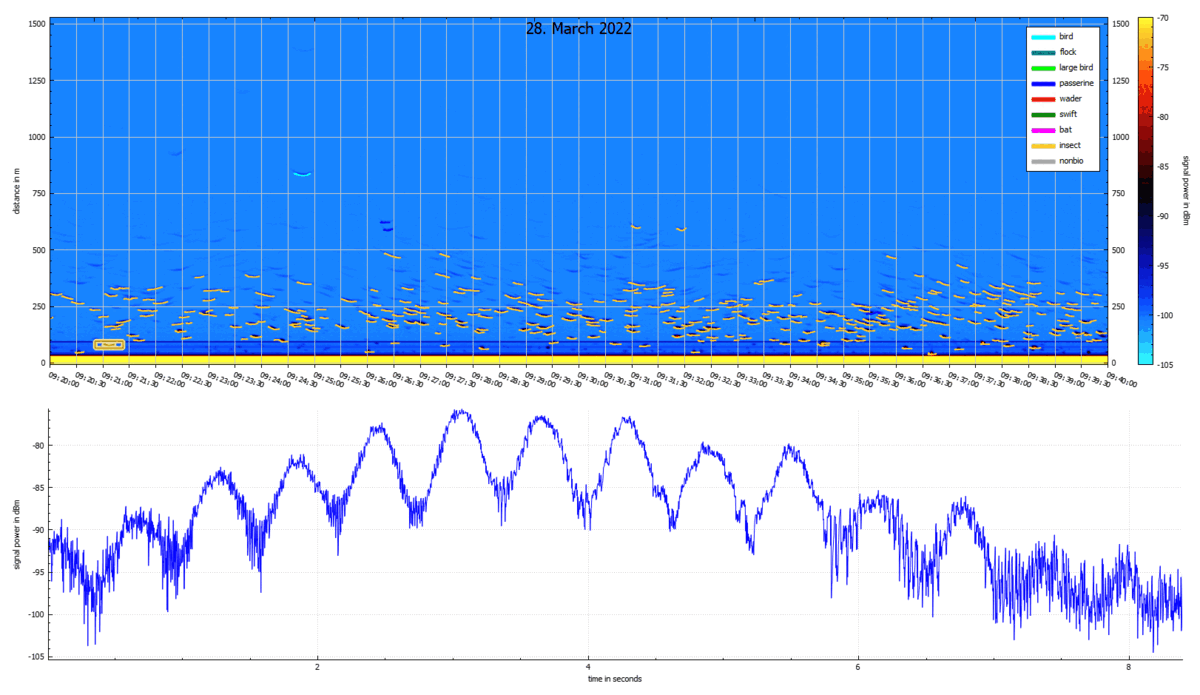
Large Birds
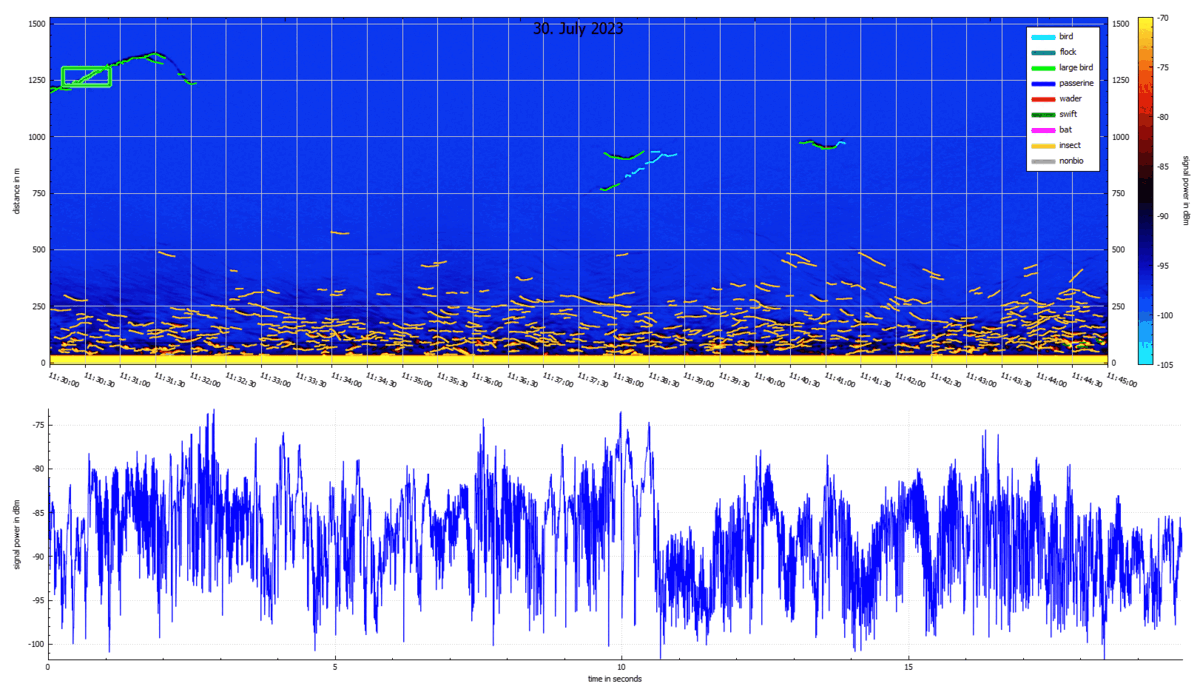
Project Partners for the Bat Classifier
Swiss Ornithological Institute
Many thanks to Birgen Haest and Baptiste Schmid from the Swiss Ornithological Institute for their invaluable contributions and expertise. Especial thanks also for organising and maintaining as well as contributing to the BirdScan Community Reference Data Set.
BirdScan Community Reference Data Set
University of Haifa
https://animalflight.haifa.ac.il/
Many thanks to the University of Haifa for developing the BATScan approach which allowed us to significanlty enlarge our reference data which made the bat classifier possible.
Especial thanks to Yuval Werber, Hadar Sextin, Yossi Yovel and Nir Sapir for their commitment, perseverance and success in developing a first bat classifier.
BATScan: A radar classification tool reveals large-scale bat migration patterns
Cornell University
Many thanks to Andrew Farnsworth and the BirdCast team from Cornell University for supporting the Texas bat measurements near the Bracken Caves. These initial bat measurements formed our understanding of bat data that was crucial in the development of the bat classifier. The gathered data form a major part in the training set for the developed bat classifier as collecting reference data for bats is a challenging task.
Are you looking for a radar solution?
Tell us about your project. We are looking forward to hearing from you.
